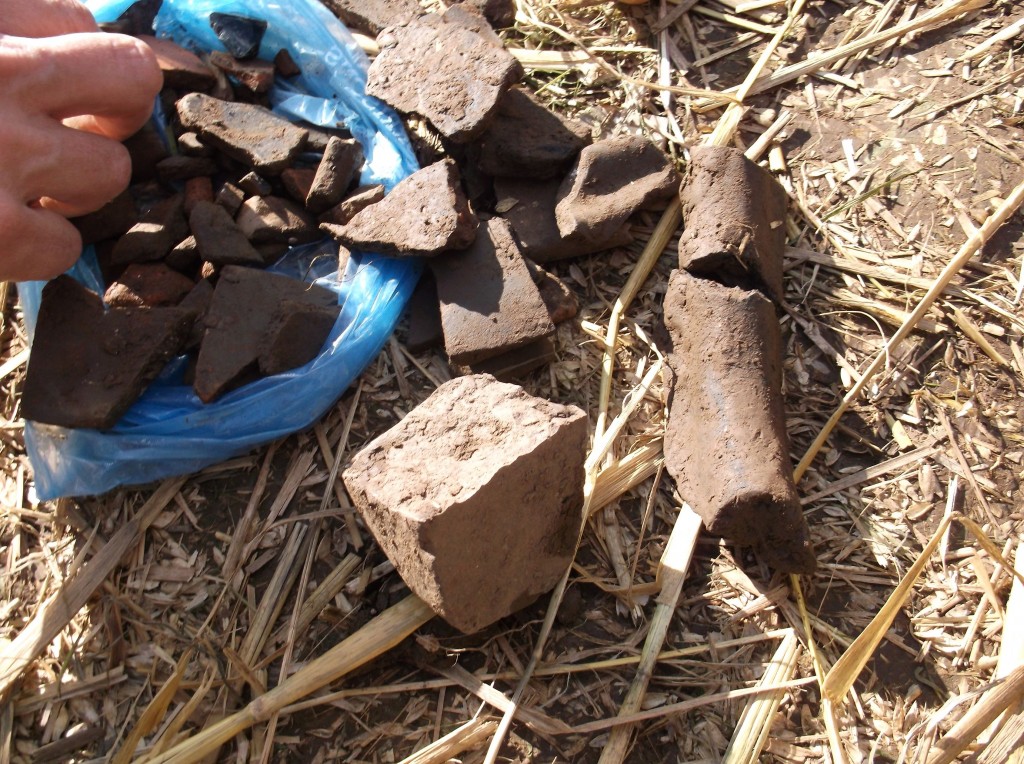Feed URL: https://blogs.kent.ac.uk/digthewolds/2014/09/20/20914-spotlight-fieldwalking/feed/?withoutcomments=1
Ever wondered how much toil in the soil is needed to unearth an archaeological artefact? There are many different ways in which one can come across a find of archaeological value, and we have seen a few already during this project, from surface surveys to our first venture into the pits.
Walkover survey is one of the initial prespection methods of surface surveying that links the number of artefacts found in one area to a site’s potential for excavation. Walking over an area of ground, the archaeologist scans the ground visually for any finds atop the soil; in our case we did not pick them up. This technique was used in our fieldwork to judge whether an area could be fieldwalked or further examined if a large number or interesting types of finds were noted during the walkover survey.

Plastic bags of finds are left in the grid squares during fieldwalking, to keep track of which squares have been fieldwalked that day
Fieldwalking, by contrast, is organised by dividing the site into grid squares – our preference for this site is ten by ten metres – and walking over each square area while carefully examining the ground for items which either rest atop the surface, or are visible from the topsoil, then gathering them. In other words, one does not extract finds from beneath the soil at this point – this is to find what has worked its way to the surface by human means (such as ploughing or non-archaeological digging) or by natural means (like the washing-down or erosion of soil).
We take great care in grouping finds together in order of where they were found, throughout collection, transport, and cleaning. Of course, we have to wash the earth off of the finds — even if one is confident in the nature of a find on the field, we can learn much more about the item when it is cleaned!
Fieldwalking works particularly well on the Binbrook site as a method of determining the site’s potential for excavation because, being arable land used for cultivation year after year, the topsoil is regularly ploughed by machine which brings soil from a deeper layer to the surface, and with it come archaeological artefacts. What we find on the surface, which may have originally resided far deeper below the earth, can directly correlate to the presence of features further down. In this case, fragments of homewares indicate evidence of settlement. Potsherds and roof tiles are numbering in their thousands as the most common finds during this project — and our daily finds are beginning to give shape to our final idea of what the settlement may be!

